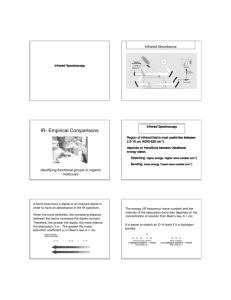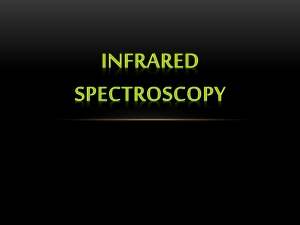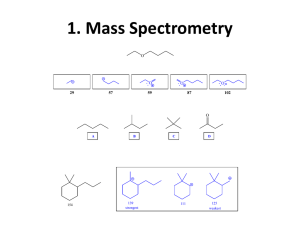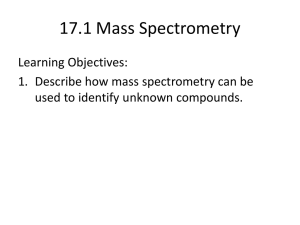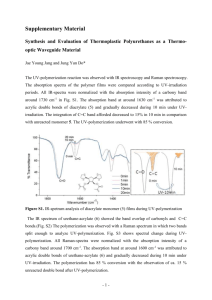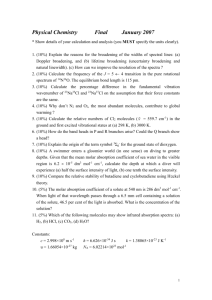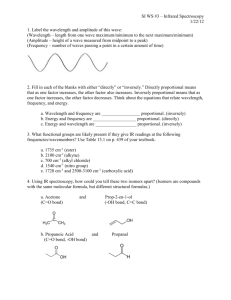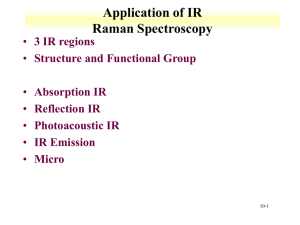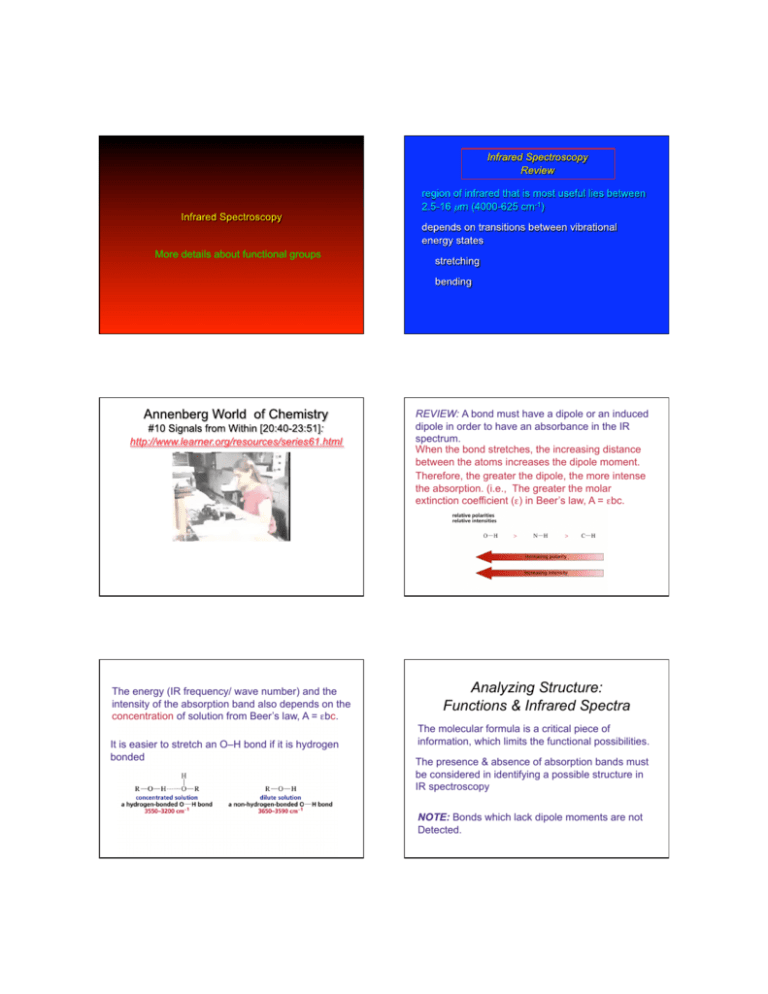
More details about functional groups
REVIEW: A bond must have a dipole or an induced
dipole in order to have an absorbance in the IR
spectrum.
When the bond stretches, the increasing distance
between the atoms increases the dipole moment.
Therefore, the greater the dipole, the more intense
the absorption. (i.e., The greater the molar
extinction coefficient (ε) in Beer’s law, A = εbc.
The energy (IR frequency/ wave number) and the
intensity of the absorption band also depends on the
concentration of solution from Beer’s law, A = εbc.
It is easier to stretch an O–H bond if it is hydrogen
bonded
Analyzing Structure:
Functions & Infrared Spectra
The molecular formula is a critical piece of
information, which limits the functional possibilities.
The presence & absence of absorption bands must
be considered in identifying a possible structure in
IR spectroscopy
NOTE: Bonds which lack dipole moments are not
Detected.
An Infrared Spectrum
The functional group
region
The peaks are quantized absorption bands
corresponding to molecular stretching and
bending vibrations
First examine the absorption bands in the vicinity of
4000-3000 cm–1
The fingerprint
region
The N–H bending vibration occurs at ~1600 cm–1
Some hydrocarbon absorption bands
Structural Components & Functional Differences:
The nitrogen of an amide is less electronegative
than the oxygen of an ester.
Therefore the amide has a longer C=O bond
(1680-1700 cm-1) and the ester (1730-1750
cm-1) is shorter.
Francis A. Carey, Organic Chemistry, Fourth Edition. Copyright © 2000 The McGraw-Hill Companies, Inc. All rights reserved.
~1725 cm-1
1700-1725 cm-1
~1100 cm-1
1025-1200 cm-1
~1200 cm-1
wavenumber (cm–1)
3075
2950
1650 and 890
wavenumber (cm–1)
3075
2950
1650 and 890
Summary:
C–H bond absorption
and hybridization
of the carbon atom
assignment
?
?
?
assignment
sp2 CH
sp3 CH
a terminal alkene with two substituents
Distinctive Stretch of C–H Bond in an
Aldehyde (the “waggle” vibration)
ortho
meta
para
A)
I
II
III
B)
II
I
III
C)
I
III
II
D)
III
II
I
Identify the compound from the IR above.
A) Benzyl alcohol
B) 1,4,6-heptatrien-3-one
C) 2,4,6-heptatrienaldehyde
D) Benzaldehyde
Identify the compound from the IR above.
A) 4-phenylbutanaldehyde
B) phenylpropyl ketone
C) meta-isopropylbenzaldehyde
D) 1-phenyl-2-butanone
Identify the compound from the IR above.
A) cyclopropanone
B) propynol
C) 2-cyclopropenol
D) 1,2-propadienol
Identify the compound from the IR above.
A) methylbenzoate
B) phenylacetate
C) p-anisaldehyde
D) o-anisaldehyde
Identify the compound from the IR above.
A) N-methylacetamide
B) N,N-dimethylformamide
C) 3-aminopropanal
D) N-methylamino-ethanal

